Email marketing has come a long way in just the past few years. But with all the fancy new functionality brands are utilizing, you know what’s kind of funny?
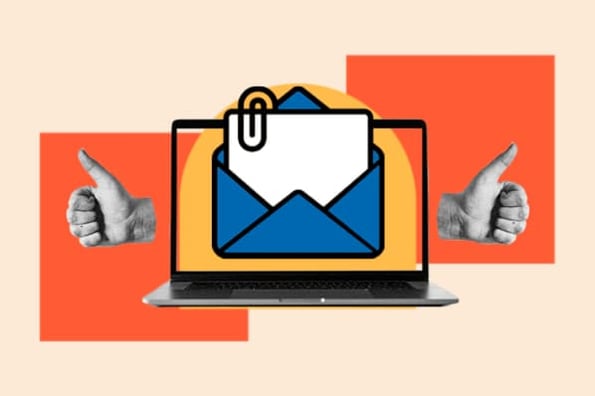
A well-written, plain-text email can perform just as well (if not better) than a highly designed-email with tons of bells and whistles.
In fact, no matter how fancy your marketing emails look, if they’re devoid of well-written content, your subscribers will stop opening — and start deleting — your messages.
So, how do you write a great marketing email? It all comes down to a few copywriting best practices that you should apply to both the subject line of your message and the message body itself.
Next time you draft a message for a lead nurturing campaign or just a one-time email send, ask yourself whether your copy meets these guidelines first.
Email Copywriting Best Practices
We'll start with copywriting tips for better subject lines, followed by copywriting tips for the bodies of your emails.
How to Write a Marketing Subject Line
Part of writing effective email copy is nailing the subject line. The subject line is like the gatekeeper of your email: No one gets to read your stellar email copy if they aren't interested enough to open your email in the first place.
That interest is garnered almost wholly on the email‘s subject line (with the sender’s name also playing a role).
We've written a few blog posts about crafting email subject lines, including one on the anatomy of a great subject line and one showing 18 examples of awesome subject lines from brands.
Here's a distillation of what you need to know to write some excellent copy.
1. Use actionable language.
With email subject lines, using actionable language doesn't necessarily mean using verbs, although it certainly helps.
Incorporate a verb (like “take,” “download,” “reserve,” “ask,” “buy,” etc.) to tell the reader what they exactly need to do.
It comes down to using language that clarifies to the recipient what they can do with the information in the email, should they choose to open it. In other words, keep the value for the user top-of-mind.
Actionable language works because it invites interaction. It implies something inside the email worth exploring, which can lead to higher open rates.
2. Personalize when possible.
Highly segmented emails tend to have higher performance levels — such as open rate and clickthrough rate — than emails that aren't personalized.
According to a study by Direct Marketing Association, segmented and targeted emails generated 58% of all revenue for the marketers surveyed, and 36% of revenues were driven by emails sent to specific target selections.
Personalization works because it creates a sense of relevance and connection for the recipient. It isn‘t just about using names, though — it’s about delivering the right content to the right person at the right time.
Think personalized product recommendations based on purchase history. As you get to know your audience better, you can tailor your email campaigns to their preferences and behaviors.
3. Prioritize clarity, and only then think about “catchiness.”
Write a subject line that is clear first and catchy second. In marketing copy, clarity should always be your priority. If, after you've drafted a clear subject line, you can also make it catchy, funny, cute, and whimsical, then go for it.
But never sacrifice clarity for the entertainment value.
UrbanDaddy is an example of a company that excels at writing subject lines that are always clear and sometimes also catchy, funny, or entertaining. Take a look at the subject lines of some of the emails I've received from them:
- UD | A Hotel in the Middle of the Ocean
- UD | Nunchucks. Made from Beer Cans. Finally.
- UD | Getting Everyone Together: Now Less Obnoxious
Some subject lines either make the recipients chuckle or are bizarre enough to pique your interest. But what you will get when you open the email is always extremely clear.
4. Align your subject line copy and email copy.
You might already know how crucial it is for your call-to-action copy and your landing page offer to align. Well, it's no different when crafting your email subject line and email message. What your email subject line promises, the email message should deliver.
Why? It‘s not just because it’s responsible. It‘s also because click-through rates plummet when readers don’t get what they're promised in the subject line. (And, in the long term, so will your email open rates.)
A high email open rate means nothing without any click-throughs. Aligning your subject line with your email content builds trust and manages your reader's expectations.
When your audience knows they can trust your subject lines to deliver on their promises, they're more likely to engage with your emails. Over time, this can improve your open rates and overall conversions.
5. Use emojis.
Emojis can inject color, emotion, and personality into your message. They help convey a tone or sentiment that words alone might not fully express.
For example, a restaurant might send an email with a subject line like “New Menu Alert! 🍔🍕🍨” or a travel agency might announce a vacation deal with “Get Ready for Paradise! 🌴✈️”. Here’s an example from ClickUp:
Emojis are universal symbols that people across different languages and cultures can understand, which makes them a powerful tool for enhancing communication.
A study showed that emails with an emoji in the subject line had a higher click-through rate, which shows how they attract attention and provoke curiosity.
This doesn't mean that every subject line should contain an emoji; use them judiciously, where they add value or match the tone of your message.
6. Test multiple subject lines.
Rather than emailing a single subject line, create two or more versions to see which performs better. For example, you might experiment with the placement of a keyword, the use of a question, or the inclusion of a number.
Testing multiple subject lines, or A/B testing, helps you determine which approach resonates best with your audience. One subject line might appeal more to your readers, leading to higher open rates and engagement.
Compare the performance metrics to refine your approach.
7. Use numbers and statistics.
Numbers are easily digestible and provide clear information to the readers. For example, here’s a subject line from The Body Shop:
Numbers and statistics work because they stand out visually, provide concrete information, and create curiosity. According to a study, email subject lines with numbers have 57% better open rates.
The specificity of numbers often implies value and makes the promise more believable, which can drive curiosity and encourage recipients to open the email.
8. Avoid using all caps.
Digitally, using capital letters is often interpreted as yelling, which isn’t exactly what you need when building a relationship with our customers.
For instance, “BUY NOW AND SAVE!” is less appealing than “Buy now and save.” It's always a good idea to communicate your message in a way that’s respectful and considerate to your reader.
All caps can appear aggressive and spammy, potentially decreasing email open rates. Apart from this, many spam filters may flag emails with subject lines, preventing your email from reaching the recipient's inbox.
They also take up more space, like in the example below:
9. Leverage FOMO (Fear of Missing Out).
Subject lines such as “Only 24 hours left for our summer sale 🕒” or “Last chance to grab your discounted ticket!” can create a sense of urgency that prompts action.
FOMO works because it appeals to a basic human instinct — the desire not to miss out on a beneficial opportunity. Creating a sense of urgency or scarcity encourages your recipients to act quickly or risk missing out.
This psychological trigger can increase your email open rates and engagement, as readers will feel compelled to find out more before it's too late.
10. Optimize for mobile.
Did you know 81% of people prefer to open their emails on their smartphones? It's crucial to make sure your subject lines are optimized for mobile.
For example, keep them under 50 characters to check they fully display on a mobile screen, something like “Enjoy 20% off your first order 🎉”.
Why does this work? When you optimize for mobile, you meet your audience where they are, literally in the palm of their hands.
Also, mobile screens are smaller, so long subject lines might get cut off, which could cause your message to lose its impact.
Short, clear, and impactful subject lines catch the eye, making the recipient more likely to tap and read on.
11. Avoid spam trigger words.
Picture this: You’ve crafted a top-notch marketing email, but it ends up in your recipients' spam folders. That’s not unusual — around 45% of emails sent in December 2022 were deemed spam.
Phrases like “100% free,” “make money,” “no purchase necessary,” or “satisfaction guaranteed” can set off alarm bells for email filters.
Why does this matter? Spam filters protect users from potentially harmful or deceitful content. If your email subject line looks like it's shouting a sales pitch, it might end up in the spam bin.
An unread email is a wasted email — choose your words carefully to ensure your content lands right in the inbox where it belongs.
12. Brainstorm with AI tool.
Got a case of writer's block? Consider brainstorming with AI tools like Jasper or ChatGPT. These tools can generate a wide array of subject lines once you feed them a few details.
For example, tell Jasper you‘re writing a sale announcement email, and you’ll have a bunch of catchy subject lines to choose from.
These AI tools use datasets to generate creative suggestions and save you time and effort. They're not just pulling ideas out of thin air, though.
They're using data-driven insights to propose subject lines likely to engage your audience. But remember, AI is a helper, not a replacement. Pair AI suggestions with your own expertise and judgment to make your emails shine.
How to Write a Marketing Email (+Tips from HubSpotters)
Now that you‘ve crafted a stellar email subject line, you have your audience’s full attention on the body of your email message. So, how do you craft copy that will get them clicking? Here are the important components you need to know:
13. Establish relevancy.
Just like the email subject line should strive to establish relevancy through personalization, so should the copy in the message of the email. Use the very beginning of the email to explain how you know each other.
Tailor your message so that it resonates with your audience's needs and interests.
Why does relevancy work? Simple: recipients want emails that are applicable to their lives. If they consider your emails helpful and relevant, they're more likely to engage and less likely to send it to junk or unsubscribe.
Segment your audience based on their preferences or past behavior, and then create emails that cater to these specific segments.
“In my experience in email marketing, you have to tell people what they’ll get from reading more,” says Kaitlin Milliken, a senior program manager at HubSpot. “That can be a discount, an offer, or a valuable piece of information they can’t get anywhere else.”
14. Write in the second person POV.
Writing in the second person point-of-view means using the pronouns “you,” “your,” and “yours“ — a direct line of communication between you and the reader. This can make your email copy feel more personal and engaging.
Instead of saying, "Customers will love this product," try saying, "You'll love this product!"
The second-person perspective shifts the focus from the brand to the person. It’s a subtle tactic that helps you stay value-oriented, which can build a stronger connection and encourage action.
15. Talk about benefits, not features.
You know the value of your email. But does your recipient? No, not yet. And it's your job to explain it.
The problem is that many emails only explain the feature they are offering, not the benefit. This email from Banana Republic sells shorts, but the copy isn‘t just shoving shorts down the recipient’s throat.
Instead, they've identified what makes these shorts worthwhile: their versatility. They allow a man to lounge around the house and then go out in the city while putting minimal effort into changing his outfit.
Benefit-oriented copy tells your customers what they stand to gain from using your product or service. While features describe what your offering is, benefits explain how it can improve the reader's life.
16. Be brief.
One of the worst mistakes email copywriters make is trying to shove the entire story into the email message.
“Your readers are probably skimming your email, which means your copy should be optimized for that,” says Martina Bretous, a marketing manager at HubSpot.
She explains, “To that end, my biggest tip is to shorten your sentences. Anywhere you can break up a sentence, do it. It’ll make your email more scannable and more digestible.”
Instead, find a way to summarize what the reader will get in a compelling way and let them click through to a page on your website for more information.
Take a look at how the folks over at Postmates drafted a brief email encouraging readers to click through for a limited-time offer:
Keeping your message on-point is the key to writing brief email copy. What‘s the point you’re trying to make with your email?
If you know the action your email is supposed to drive (things like the recipient orders free lattes on-demand, the recipient remembers to buy their Bruce Springsteen tickets, the recipient gets motivated to work out, etc.) then you'll have a much easier time drafting succinct email copy.
17. Be lovable.
Just because emails are meant to inform doesn‘t mean they can’t also delight. In some cases, email can be a great avenue for letting your brand's personality shine, helping you build a meaningful relationship with the folks on your email lists.
After all, providing a lovable experience for people begins and ends with how you communicate with them.
Check out the example below from the folks over at Death to Stock Photos:
People buy from brands they like and trust. Being lovable builds a connection that goes beyond the transactional. But, stay true to your brand voice — if humor isn't your thing, you can still be lovable by being helpful, kind, or empathetic.
18. Use actionable language in your call to action.
That's right: Emails have calls to action, too. Well, the good ones do. First and foremost, your email call-to-action should be extremely easy to identify.
Remember: People scan their emails. If there‘s one thing you want your recipient to pick up on, it’s your call-to-action. Your CTA is the clear, concise command that tells your reader exactly what to do.
Think “Shop Now 🛍️” or “Claim Your Spot! 🎟️”. Make it irresistible so they can't help but click.
A well-crafted CTA is like the big finale of your email — it‘s what converts readers into customers. It works because it provides clear direction and motivation for the reader.
Plus, if you’ve done your job right in the rest of the email, they're primed and ready to take that next step.
19. Use a conversational tone.
A conversational tone can be your best friend.
Instead of a stodgy “Our company is pleased to announce an unprecedented sale,” why not try something like, “Guess what? We‘re having a huge sale - you won’t want to miss this!” It‘s like you’re having a friendly chat with your reader.
“I used to write an email newsletter for executives in a previous role. We always started out with a little note from the editor,” says Milliken. “This helped us keep the tone conversational and speak directly to our audience.”
The magic of a conversational tone is that it makes your emails feel more personal and less like generic marketing material. Readers tend to respond better to messages that feel human and relatable.
Making your emails sound like they're coming from a friend rather than a faceless corporation increases engagement and builds a stronger connection with your audience. Remember, people like to do business with people, not robots.
20. Use AI tools for content ideas.
Feed AI tools like ChatGPT and Jasper some context, and they'll spit out a variety of creative content ideas. For instance, you could ask ChatGPT to help you come up with engaging ways to introduce a new product feature.
These tools can provide you with many ideas, but you'll need to cherry-pick the best ones that suit your brand and audience.
You know what resonates with your readers, what their interests are, and what language they speak (both literally and figuratively).
Use HubSpot's Campaign Assistant to generate your email copy in just a few clicks so you can focus on tasks that need a human touch.
8 Marketing Email Tips
You now know how to write compelling email subject lines and copy. Here are eight tips that tie everything together.
1. Include social proof.
Think customer testimonials, ratings or reviews, or case studies that highlight the success of your product or service. For instance, “98% of our users reported increased productivity within a week!”
People trust other people. Social proof works because it shows your recipients that others have benefitted from your product or service. This can help build trust and credibility, making it more likely for the reader to take the desired action.
2. Incorporate storytelling.
Instead of just listing your product‘s features, share a story about how it solved a problem. Storytelling isn’t just for bedtime — it can make your marketing emails shine too!
For example, “Meet Sarah. She struggled with managing her finances until she discovered our app…”
The beauty of storytelling is that it engages the reader on a more emotional level, making your message more memorable.
Plus, it helps your readers envision how they could use and benefit from your product, increasing the likelihood they'll make a purchase.
3. Use bullet points or numbered lists.
Use bullet points or numbered lists to break down complex information into easy-to-digest chunks. For example, “Our software helps you: 1) Organize your tasks, 2) Manage your time, 3) Increase productivity.”
This format is effective because it's user-friendly. Readers can quickly scan the key points and understand your message without wading through dense paragraphs.
It makes your content accessible and ensures readers don’t have to spend way too much time on it.
4. Add visual elements.
A picture is worth a thousand words, right? Well-chosen images, infographics, or even GIFs can add a new dimension to your marketing emails. For example, show off your new product with a vibrant photo or infographic illustrating its benefits.
Visual elements can enhance your message by providing a visual representation of your content. They grab attention, break up text, and can significantly improve engagement.
After all, our brains process images much faster than text, so a well-placed image can boost comprehension and retention.
5. Maintain consistency in tone and style.
To create a cohesive brand experience, keep your tone and style consistent across your emails. If your brand is fun and casual, a formal, corporate-sounding email would feel out of place.
For instance, if you’re known for using friendly, laid-back language, keep that up in your emails.
Consistency in tone and style helps reinforce your brand identity and builds trust with your audience. When readers know what to expect, they're more likely to stay engaged and look forward to your messages.
Consider creating a style guide for your email communications that you revisit and revise as your brand grows.
6. Always proofread.
Before you hit “send,” always proofread your email. Typos, grammatical errors, or broken links can damage your credibility and distract from your message. Take this as a bad example: “We're excited to announce our new prouduct!”
Proofreading is crucial because it ensures your message is clear and professional. Errors can cause confusion or even change the meaning of your content. Plus, they can make your brand look careless, which isn't the image you want to project.
Use tools like Grammarly to help catch any lingering errors, and if possible, have a colleague give your email a glance before hitting send.
7. Segment your audience for tailored content.
One-size-fits-all might work for scarves but not for marketing emails. Segment your audience based on criteria like location, purchase history, or interests, and tailor your content to each segment.
For example, offer a product tailored to a customer's past purchases or share content relevant to their industry.
Segmenting your audience allows for personalization, which can boost engagement and conversion rates. By making your emails more relevant to each recipient, they'll feel more valued and understood.
8. Provide value in every email.
Every email you send should serve your recipient. This could mean exclusive discounts, insightful industry news, or a funny joke to brighten their day. For example, “Want to make the most of our app? Try this top tip!”
Providing consistent value will foster a positive relationship with your audience, making them anticipate your emails. This also increases their engagement with your calls to action.
To ensure you're providing what your audience values, conduct surveys or research to better understand their interests. And remember, it’s not just about selling — it's about serving.
What else do you think makes for effective email marketing copy? Let us know in the comments.
Editor's Note: This post was originally published in May 2012 and has been updated for freshness, accuracy, and comprehensiveness.
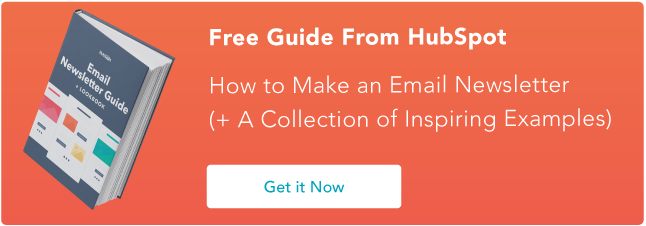


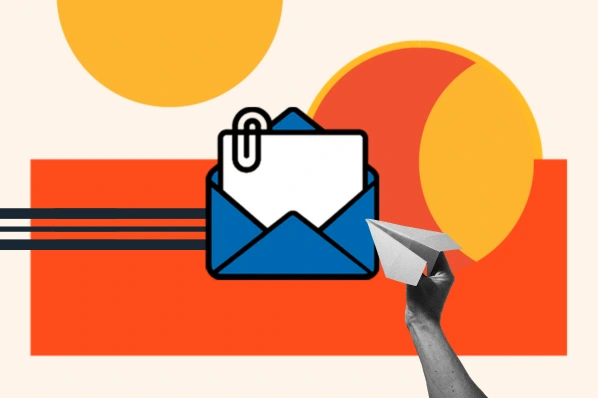



![Creating an HTML Email: The Design Guide You Need [+ Free Templates]](https://www.hubspot.com/hubfs/html%20design.png)
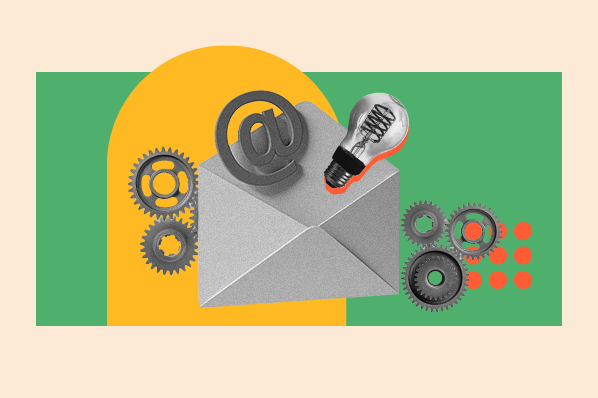
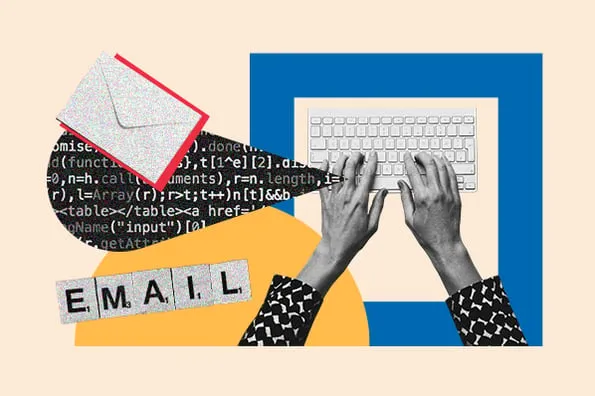
![30 Brilliant Marketing Email Campaign Examples [+ Template]](https://www.hubspot.com/hubfs/email-marketing-examples_29.webp)